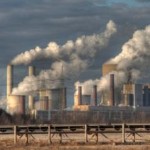
Washington – Climate change is expected to lead to worsening drought conditions and greater heat extremes, increased threats of Dengue Fever, drought, floods, air pollution and myriad health problems, according to the Natural Resources Defense Council (NRDC).
A new web tool unveiled by NRDC lets users read how their state might be impacted by climate change. On the site, www.nrdc.org/climatemaps, users can see local data and maps detailing extreme weather patterns throughout the country, see local climate change vulnerabilities and learn about health problems in their own communities that are connected to climate change.
Based on an analysis of data gathered from the Environmental Protection Agency (EPA), the U.S. Department of Agriculture, Centers for Disease Control and Prevention and other resources, NRDC’s new “Climate Change Threatens Health” webpage lets users see the effects of climate change at a regional and state level.
For example, the NRDC web tool compares temperature data in each state from 2000 through 2009 to local temperatures from 1961 to 1990. Users can see that residents of the western United States experienced more days of extreme heat than in previous decades and frequent drought conditions from 2000 through 2009.
Extreme heat can lead to heat exhaustion, heat stroke, cardiovascular disease, and kidney disease, while drought can lead to lower crop yields and contaminated drinking water. Many communities do not have plans in place to address these problems.
The tool also highlights areas with unhealthy air quality in each state. Users can see in 41 percent of states (21 of 51), the majority of counties experienced both unhealthy summer ozone smog and allergenic ragweed (AR, CT, DC, IL, IN, LA, ME, MA, MI, MO, NH, NJ, NY, NC, OH, PA, RI, SC, VT, VA, WV). Both of these air pollution health threats are projected to worsen due to climate change.
Exposure to increased smog, pollen pollution, and wildfire smoke puts a wide range of people at risk for irritated eyes, throats and lung damage (the U.S. EPA likened breathing ozone to getting a sunburn on your lungs). This includes outdoor workers, children, the elderly, and those who exercise outside.
But people with asthma, allergies, and other respiratory diseases face the most serious threats, since exposure to increased pollution heightens sensitivity to allergens, impairs lungs, triggers asthma attacks, sends people to the hospital, and even results in premature death.
Among other key findings throughout the United States:
- 20 states that have experienced the worst extreme heat are: Alabama, Alaska, Arizona, California, Colorado, Connecticut, Delaware, Hawaii, Idaho, Kansas, Massachusetts, Montana, Nevada, New Hampshire, New Mexico, Oregon, Texas, Utah, Washington and Wyoming, as well as the District of Columbia. This means residents in the majority of these states and in D.C. experienced more than two weeks per summer of extreme heat that was worse than in past decades.
- About 81 percent of those states most vulnerable to extreme heat do not have heat-health adaptation plans (AL, AK, AZ, CO, CT, DE, DC, HI, ID, KS, MA, MT, NV, NM, TX, UT, WY). This highlights the lack of climate-health preparedness in many locations.
- At locations both urban and rural, air pollution challenged health in the last decade. Even around cities in the southwest like Phoenix, Arizona, where people used to travel for the clean air, now suffers from a double-whammy of air pollution that will get worse with climate change.
- 78 percent of states (40 of the 51) had at least one county in the highest-vulnerability air pollution category, with both ragweed and unhealthy summer ozone smog days reported. The 10 states that did not have a county in the highest-vulnerability category are: Alaska, Hawaii, Washington, Oregon, Idaho, Montana, Wyoming, North Dakota, South Dakota, and Iowa.
- Flooding risks and vulnerabilities exist throughout the country. All or most of the watersheds in 31% of the states (16 of 51: AK, CT, DE, FL, IN, ME, MA, NE, NH, NJ, NY, ND, OH, PA, SD, VT) had more than 23 days of extreme high flow in major watersheds – more than 3 weeks per year, on average.
- Mid-Atlantic states like New Jersey, Delaware, and Maryland had the majority of counties reporting having one or both of the mosquito species that can carry and transmit this painful viral illness. Other areas vulnerable to the spread of Dengue Fever cut across a swath of states from California, Arizona, New Mexico, and Texas all the way up into New York and New Hampshire.
“Climate change is real and in many cases is already affecting people and natural ecosystems,” said Kim Knowlton, senior scientist in NRDC’s health and environment program “Our analysis will help people across the country find out exactly how climate change affects their state. From the dangers of extreme heat and increased flooding to the spread of ragweed whose pollen causes allergies or mosquitoes that can spread disease, climate change does not discriminate and local communities need to be better prepared.”
Dan Lashof, Director of NRDC’s Climate Center, said these threats, aggravated by increased levels of carbon pollution, illustrate the danger of congressional efforts to dismantle the Clean Air Act and its public health protections.
“Climate preparedness should be better funded, and the states that don’t have public health preparedness strategies in their climate adaptation plans definitely need to add those,” Lashof said. “Our maps show this is an ongoing problem, and the health effects of this summer’s heat waves have not even been fully measured yet.”
The NRDC website can be found here: www.nrdc.org/climatemaps
 About NRDC
About NRDC
The Natural Resources Defense Council (NRDC) is an international non-profit environmental organization with more than 1.3 million members and online activists. Since 1970, their lawyers, scientists, and other environmental specialists have worked to protect the world’s natural resources, public health, and the environment. NRDC has offices in New York City, Washington, D.C., Los Angeles, San Francisco, Chicago, Livingston, Montana, and Beijing. For more information, visit www.nrdc.org.
Source: NRDC.













